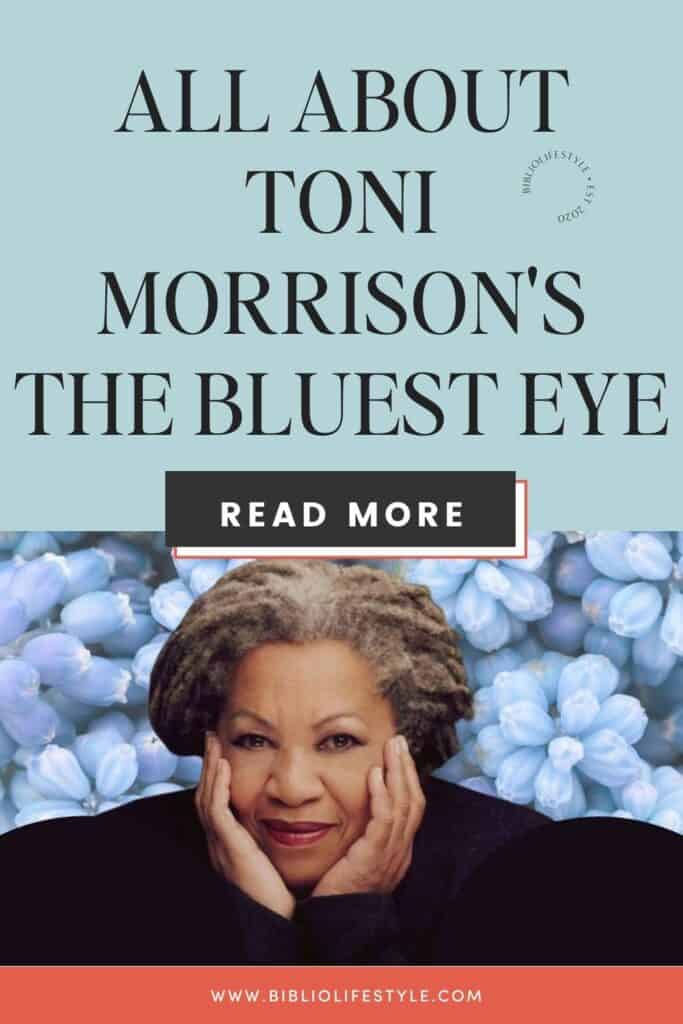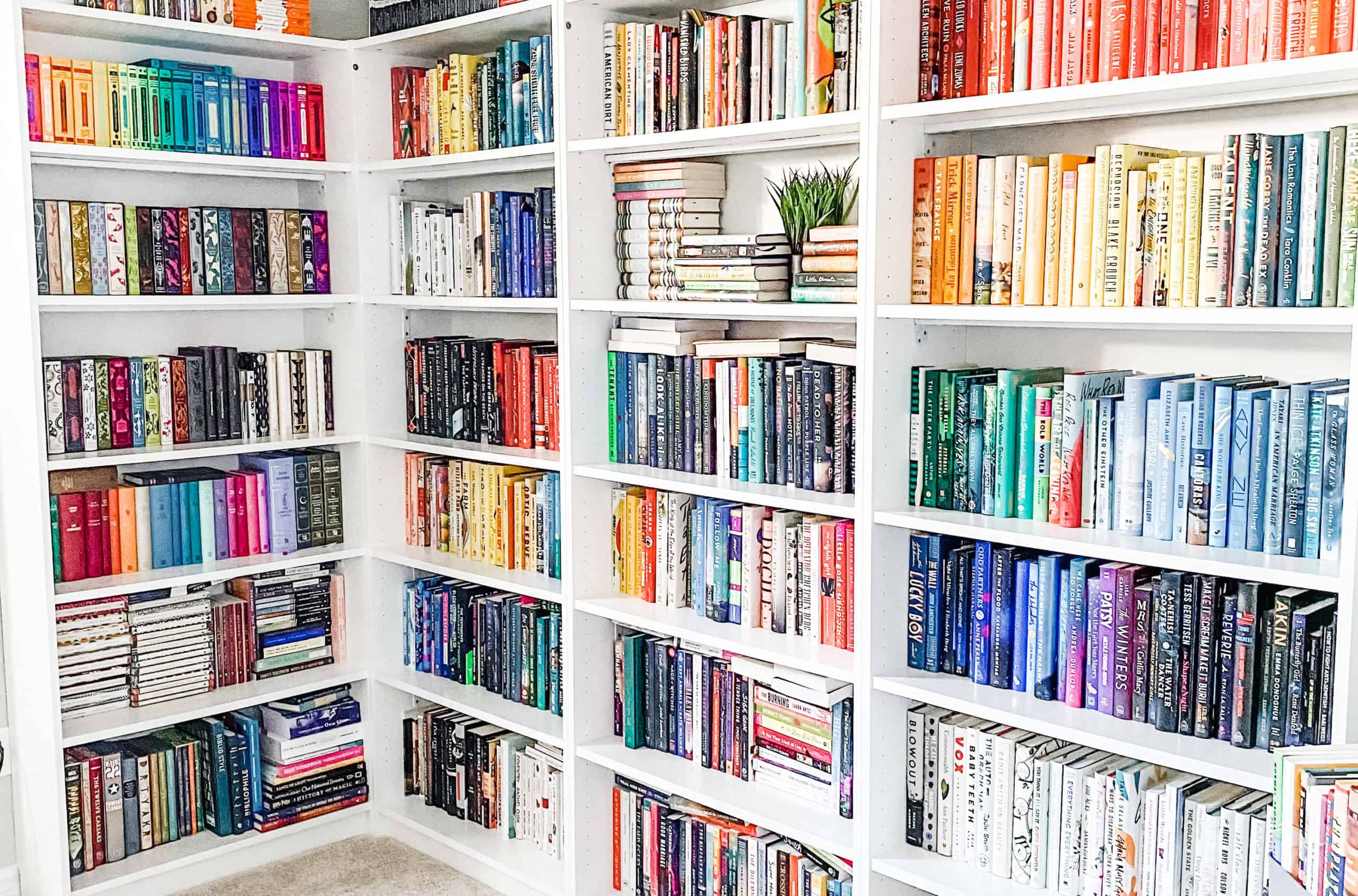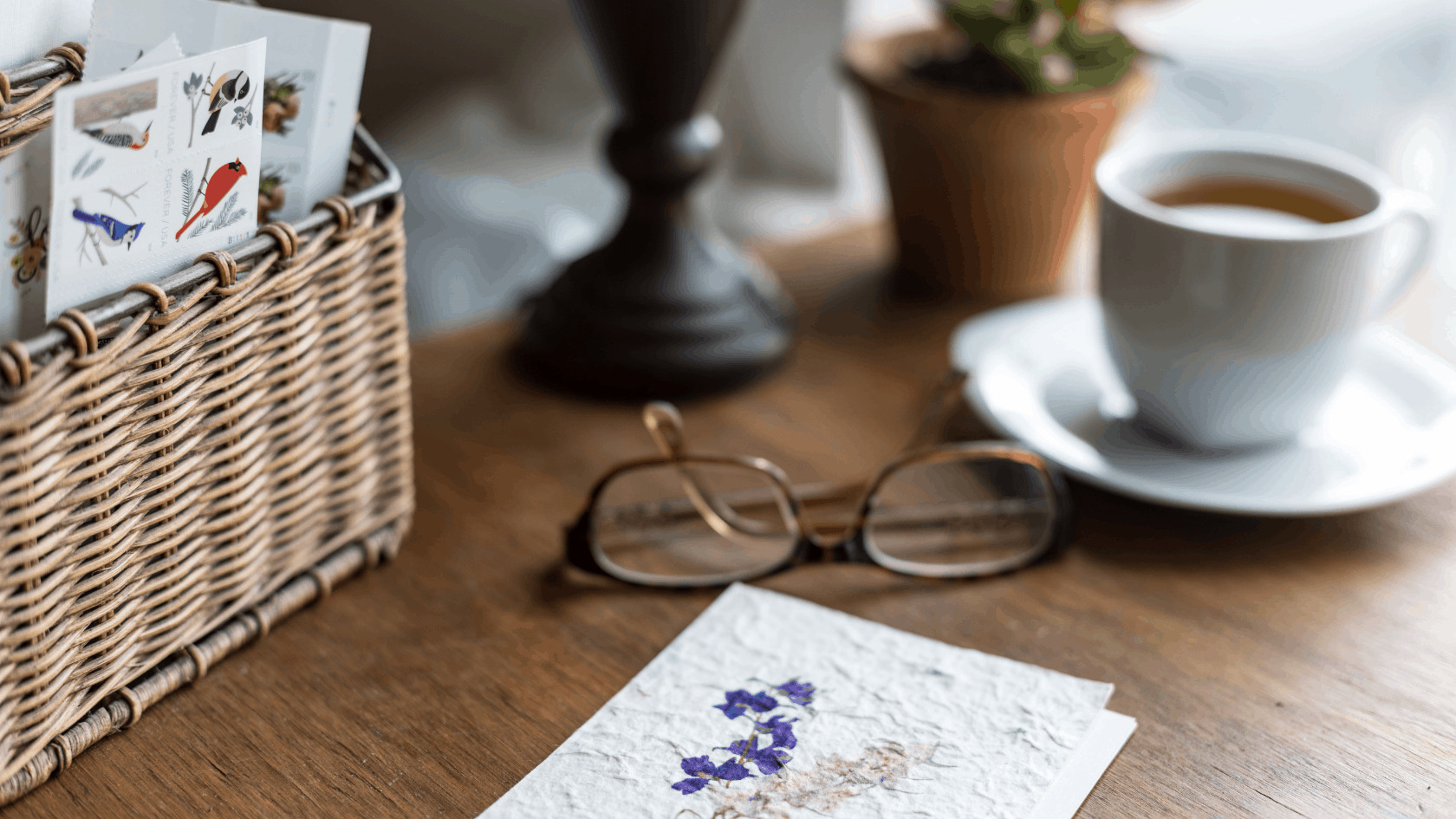Last Updated on December 29, 2023 by showitadmin

Toni Morrison‘s The Bluest Eye is a profound exploration of the deep-seated influences of racial, societal, and familial structures on the self-worth of an individual. Published in 1970, the novel presents an incisive critique of beauty standards imposed by white, middle-class society, as embodied in the longing of the novel’s young protagonist, Pecola Breedlove, for the ‘bluest’ eyes.
When I was in school, which feels like ten lifetimes ago, Toni Morrison was not taught in my school. I first started reading her work on my own in my early twenties, and the first book I read was The Bluest Eye. Since then, I’ve reread it at least three times, and each time I’ve read the book, I’ve taken something new away. So in this article, I will do a mini-deep dive into Toni Morrison’s The Bluest Eye. I’ll share a short summary, highlight the main characters and the key themes, and answer some frequently asked questions. Plus, I will provide some of the discussion questions I used when discussing the book as a part of an online ‘Year of Morrison’ read-along I hosted in 2019.
About Toni Morrison’s The Bluest Eye
Summary
The Bluest Eye presents a heart-wrenching narrative set in Lorain, Ohio, depicting the life of a young African-American girl named Pecola Breedlove. Pecola, influenced by societal standards and norms, develops a deep-seated desire to have blue eyes, a characteristic she equates with beauty and acceptance. This longing stems from her experiences of racial prejudice and her family’s entrenched poverty and dysfunction. As the story unfolds, Pecola’s obsession with having blue eyes intensifies, symbolizing her internalized self-hatred and the destructive power of racial self-loathing. The novel’s compelling portrayal of Pecola’s tragic journey offers profound insights into societal constructs of beauty and the devastating impacts of racism.
Get a copy of The Bluest Eye on Amazon or Bookshop.
The Bluest Eye was an Oprah’s Book Club selection!
Characters
Pecola Breedlove
Pecola Breedlove is the protagonist of the novel. She is a young African-American girl, constantly belittled and made to feel inferior due to her skin color. Pecola internalizes the racial prejudice and develops a strong desire to have blue eyes, which she believes will make her beautiful and loved.
Claudia MacTeer
Claudia MacTeer, the narrator of the story, offers a contrasting perspective on beauty and self-worth. Unlike Pecola, Claudia rejects white standards of beauty and demonstrates resilience and resistance in the face of racial and gender discrimination.
Cholly Breedlove
Cholly Breedlove is Pecola’s father. His character portrays the destructive power of racism and poverty. Abandoned by his parents at a young age and rejected by society, Cholly becomes an alcoholic who inflicts his pain and frustration on his family.
Pauline ‘Polly’ Breedlove
Pauline Breedlove, Pecola’s mother, also internalizes societal beauty standards. She finds escape from her harsh reality in the glamorous world of the white families for whom she works, neglecting her own family and adding to Pecola’s feelings of worthlessness.
Frieda MacTeer
Frieda is Claudia’s older sister and Pecola’s friend. She also struggles with societal beauty standards but possesses a strong sense of self-worth that she tries to instill in Pecola.

Themes
Racism and Internalized Self-Hatred
The Bluest Eye explores the destructive nature of racism and its impact on individuals’ self-perception, particularly people of color. Pecola’s longing for blue eyes and her belief that they will make her beautiful is a poignant representation of the internalized self-hatred caused by societal standards.
Poverty and Dysfunction
The novel also sheds light on the effects of poverty and familial dysfunction on individuals’ lives. The Breedlove family’s poverty and Cholly’s dysfunctional behavior are a product of systemic racism, perpetuated by society’s neglect and prejudice.
Beauty Standards and White Ideals
The Bluest Eye challenges societal beauty standards that prioritize white ideals. Through the characters of Pecola and her family, Morrison highlights the damaging effects of these standards on people of color’s self-worth and identity.
Writing Style
Toni Morrison’s writing style in The Bluest Eye is poetic, evocative, and rich in metaphor and symbolism. Morrison’s use of language is beautiful and thought-provoking, and the book’s structure, with its shifting narratives and perspectives, adds to its depth. The book is a difficult read at times, but it is also incredibly rewarding and emotionally impactful.
Key Facts
- The Bluest Eye was Toni Morrison’s first novel, published in 1970.
- The story is set in Lorain, Ohio, the same town where Morrison grew up.
- The title of the book is inspired by a childhood friend who wanted blue eyes and believed they would make her beautiful.
- The novel received critical acclaim for its raw portrayal of racism and its effects on individuals and society.
- The Bluest Eye has been banned in several schools and libraries due to its explicit content and discussions of controversial topics.
Frequently Asked Questions About Toni Morrison’s The Bluest Eye
Why is the book The Bluest Eye controversial?
The Bluest Eye has sparked controversy primarily due to its unflinching representation of difficult and sensitive themes. The novel explores issues such as racism, incest, and child molestation, offering a raw, honest portrayal that can be uncomfortable for some readers to confront. Its graphic nature and explicit language, while crucial to the narrative, have led to its banning in several schools and libraries. Critics argue that the book’s content is inappropriate for younger audiences. However, supporters of the novel assert that The Bluest Eye’s depiction of these topics is an essential examination of the harsh realities faced by marginalized individuals, and its controversy underscores the necessity for open dialogue around these subjects.
Is The Bluest Eye Based on a true story?
While “The Bluest Eye” is not directly based on a true story, Toni Morrison drew inspiration from her experiences growing up in Lorain, Ohio, and the racial dynamics she observed in society. The title of the book is influenced by an anecdote from Morrison’s childhood about a friend who wished she had blue eyes. The themes of the novel reflect the harsh realities of racism, colorism, and societal beauty standards that were prevalent during her time. Although the characters and plot are fictional, they encapsulate many truthful aspects of the human experience, making the story resonate deeply with its readers.
Why was The Bluest Eye banned in Florida?
The Bluest Eye was banned in several districts in Florida due to its explicit content and the portrayal of sensitive and controversial themes. Some parents, educational bodies, and political groups considered the book’s raw depiction of racism, incest, and child molestation inappropriate for school curriculums. Supporters of the ban argued that the novel’s graphic nature and explicit language were unsuitable for young readers. However, critics of the ban argued that Morrison’s portrayal of these harsh realities was crucial in fostering critical conversations about societal issues and the lived experiences of marginalized individuals.
What grade read The Bluest Eye?
The Bluest Eye is typically read by high school students, often in grade 11 or 12. However, the appropriateness of the book can depend on the maturity of the students and the context provided by the educator. It’s essential that these complex and sensitive themes are thoroughly discussed to ensure a comprehensive understanding of the book. Due to the explicit content and mature themes, it is often not recommended for younger readers.
Which states have banned The Bluest Eye?
As of writing this article, The Bluest Eye by Toni Morrison has encountered challenges and bans in several states across the United States. Some of these states include Michigan, North Carolina, Florida, Ohio, and Colorado. The reasons for the bans typically revolve around the book’s explicit content and its representation of sensitive and controversial themes such as racism, incest, and child abuse. The book’s raw, honest portrayal of these topics has sparked debate about its appropriateness for school curriculums and younger audiences.

Toni Morrison’s The Bluest Eye Discussion Questions
The edition of The Bluest Eye that I used when discussing the book as a part of an online ‘Year of Morrison’ read-along I hosted in 2019 can be found here on Amazon or Bookshop.
- The novel opens with an excerpt from an old-fashioned reading primer (a textbook used to teach individuals to read.) Then the lines and letters start to run together. This can also be seen at the beginning of select chapters. Why does the author do this?
- Why does Morrison choose to tell the story through Claudia’s point of view?
- Morrison has written about a young Black girl’s obsession with a concept of beauty established by a White culture. What are the parameters of beauty—for men and women—Black and White? Are they the same, and do those parameters change across cultures, genders, and time?
- Pecola connects the idea of beauty with being loved. To what extent are we all guilty of making that connection?
- What do you believe shaped Pecola’s concept of beauty? Was it purely from her own thoughts? Her family? Her environment? American society?
- How does racial self-loathing corrode the lives of Pecola and her parents, Cholly and Pauline Breedlove?
- How does racial self-hatred manifest itself in characters like Maureen Peal, Geraldine, and Soaphead Church?
- On page 87 of the novel, Junior’s mother does not like him to play with niggers. She had explained to him the difference between colored people and niggers. Do you understand his mother’s reason? Do you believe situations like this exist today?
- What role does social class play in the novel?
- How did you feel about Ms. Breedlove? From a general point of view, how she cared for her children and her home in comparison to the Fisher family?
- How did you feel about Mr. Breedlove? I noticed that while Morrison condemns his behavior, she does not demonize him. Why do you think she did that?
- What do you believe are the major themes in this novel?
- What are your overall thoughts on this novel? Including your thoughts before, during, and after reading.
Legacy of Toni Morrison’s The Bluest Eye
Toni Morrison’s The Bluest Eye is a landmark in American literature, sparking crucial conversations about racism, colorism, and beauty standards in both literature and media. The novel has also paved the way and empowered Black women writers to share their perspectives, further amplifying marginalized voices. Despite challenges and bans, it remains essential literature studied worldwide, and it’s a timeless piece of literature that inspires generations.
Morrison’s legacy as an influential author is cemented with this thought-provoking novel, that has undeniably shaped the American literary landscape. Yes, The Bluest Eye explores race, identity, and societal norms, inviting readers to confront uncomfortable truths. But I truly believe that together, we can use literature to create understanding and change in our society. So let’s celebrate Morrison’s work by reading, discussing, and valuing her stories, creating understanding and change in our society.
Have you read The Bluest Eye?
Is The Bluest Eye on your TBR? What are your thought’s on this being Toni Morrison’s debut novel? What is your favorite Toni Morrison book? Let us talk all about The Bluest Eye and all things Toni Morrison in the comments below!
MORE TONI MORRISON CONTENT




+ show Comments
- Hide Comments
add a comment